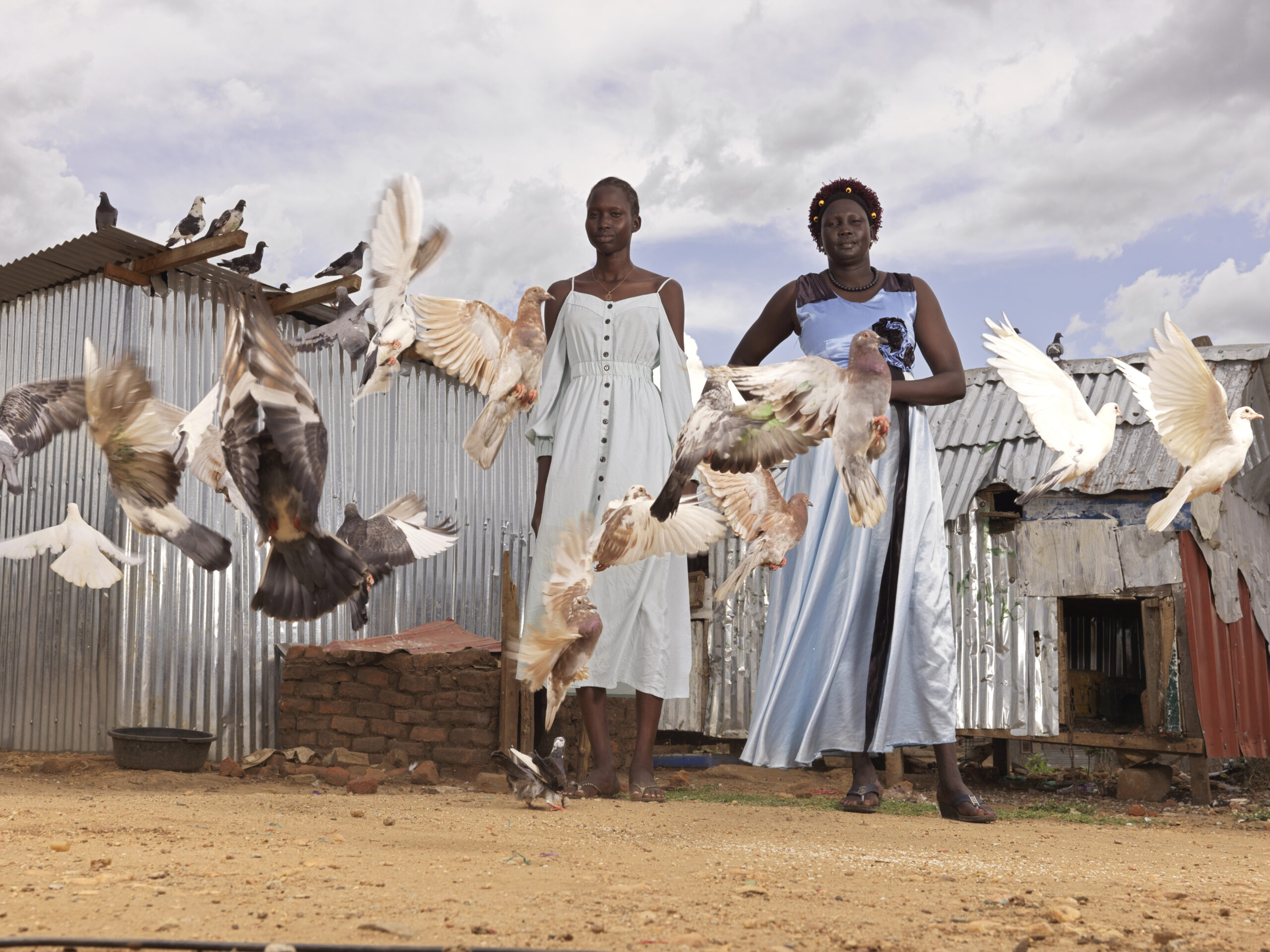Conflict
Juba, South Sudan | Peter Caton
Mobility is part of the fabric of life in the Horn of Africa, like other places in the world. However in 2023, an estimated 14.5 million people in the region have been displaced from their homes, with conflict being a major cause.
What are our key findings on conflict and mobility in the Horn of Africa?
Conflicts in the Horn of Africa often last many years and interventions must grapple with the complexity this creates.
People who are displaced may experience a long-term or even permanent rupture in their lives. Return may not be possible or desirable; new generations are born into displacement, which becomes a normal feature of their lives.
Forced immobility is an often-overlooked implication of conflict.
Not only does conflict threaten lives, it also disrupts livelihoods, preventing people from accessing the resources they need to survive.
Conflict can compel people to leave their areas of origin and residence, but it can also prevent people from engaging in the kind of regular mobility that they depend upon to support themselves.
For policy makers and practitioners, we recommend:

Ensure that the conditions exist for voluntary, safe, dignified, informed return and sustainable re-integration.

Support a pace of returns that returnees – and the communities they might return to – can both support.

Develop policy and programming that considers cyclical processes of displacement, mobility and return.
Our research on mobility and conflict in the Horn of Africa
In depth: Conflict and migration in South Sudan
In September 2021, the Research and Evidence Facility and Samuel Hall published a study on displacement, return and reintegration in South Sudan.
We found that many South Sudanese people move in ways that are labelled as ‘return’ but are, in fact, pendular (back and forth), partial (with families splitting across borders) and transitory.
These patterns allow people to minimise risks, as well as to access rights and opportunities for protection. Split households further blur the line between displacement and return.
This complex pattern also has major implications for policy makers and practitioners. We need to move beyond narrow understandings of return as a ‘durable solution’ and acknowledge more complex requirements.
How has South Sudan experienced conflict?
South Sudan is the youngest country in the world, and it is reeling from the effects of conflict and climate change. The UNHCR has a non-return advisory, as the context is not yet conducive to returns.
Displacement has affected the lives of generations of South Sudanese. Before the country gained independence, the second Sudanese civil war (1983–2005) drove up to 4.5 million South Sudanese to leave their homes and seek protection within their own country or abroad. Many refugees decided to return following the signing of the Comprehensive Peace Agreement (CPA) in 2005, and the process leading to the establishment of South Sudan as an independent state in 2011. The Internal Displacement Monitoring Centre estimates that 2 million people returned between 2011 and 2013.
However, many had to flee again when conflict broke out in 2013, between President Salva Kiir’s government forces and the Sudan People’s Liberation Army-in Opposition (SPLA-IO), led by Riek Machar, as well as other armed groups. When the main parties to the conflict signed peace agreements in 2015 and 2018, many expected internally displaced persons and refugees to seek to return again.
The search for durable solutions to the situation that South Sudanese refugees and internally displaced persons face is a central element of the peace-building framework established in 2018 and it has been reaffirmed in subsequent national and regional initiatives.
However, the number of those returning permanently has remained relatively low. UNHCR and other organisations helped 18,890 internally displaced persons to return between the signing of the Revitalized Agreement on the Resolution of the Conflict in South Sudan (R-ARCSS) in September 2018 and July 2021. More people have returned on their own, despite ongoing insecurity and a chronic shortage of essential services.
Today, an estimated 2 million South Sudanese people are displaced within their own country and 2.2 million are registered as refugees in neighbouring countries. This means that roughly one-third of the South Sudanese population is currently displaced, either internally or across borders.
What does this mean for the people of South Sudan?
People’s movements are often transitory. They don’t lead to people’s permanent re-establishment in their ‘areas of origin’. For many people, mobility allows them to minimise risks and maximise the opportunities. As a refugee who temporarily returned to Juba said:
“We keep one leg in Uganda and another in South Sudan”.
Read Lisa’s story, as told to Samuel Hall’s Nassim Majidi.
For example, here is a lifeline of one of the male respondents to the study – a 42-year-old man who has lived through four episodes of war, displacement and return, since his birth.

Read the article: Who are the ‘returnees’ in South Sudan?
Read Reverend Jack’s story, as told to Nassim Majidi and Joseph Malish.
In South Sudan, the notion of ‘returning home’, inherent in most durable solutions programmes, does not adequately account for a history of displacement, migration, intermarriage, urbanisation and exile that stretches across generations.
This is especially the case for young people who were born while their families were displaced and have no direct experience of their families’ areas of origin. For many of them, the camp is the only place to return to when the prospects to move elsewhere fail.
Explore more themes





